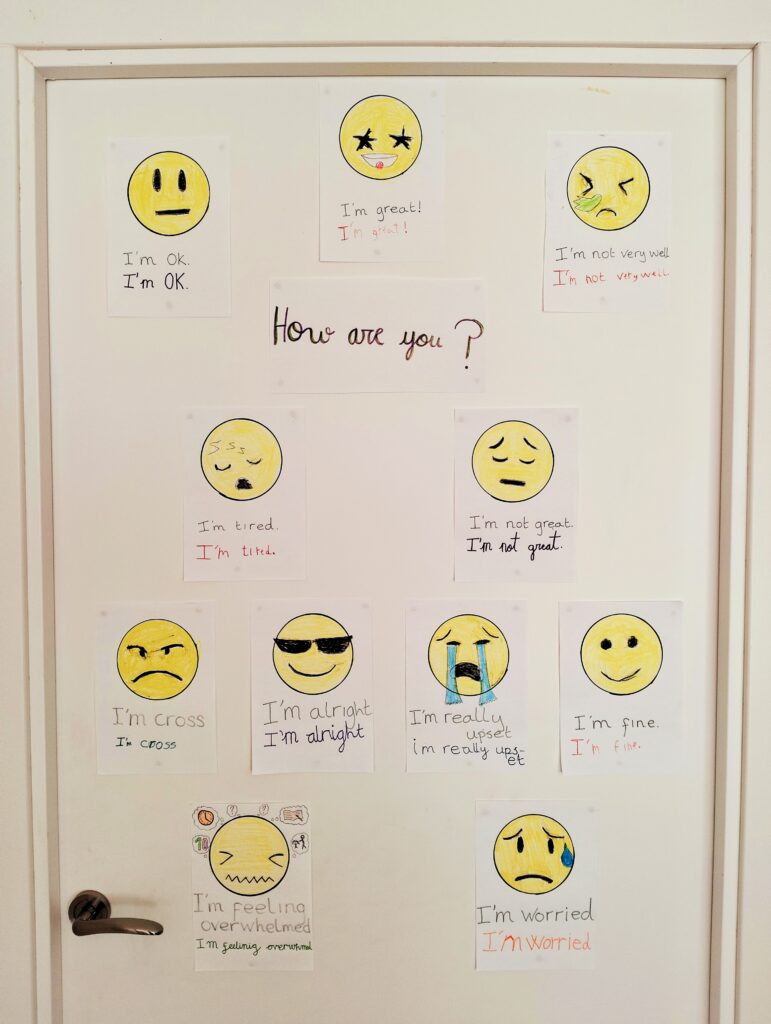10 RESPUESTAS PARA “How are you?” Y UNA ACTIVIDAD PARA AYUDAR A TU HIJO HABLAR EN INGLÉS EN CASA
¿No te aburre empezar todas las conversaciones así?
“Hey, how are you?”
“I’m fine, thank you. And you?”
“I’m fine, thank you.”
¿Y si no estás bien? O ¿qué pasa si de verdad te importa cómo se siente alguien? En la primera clase de inglés a todos se nos enseñan estas frases, pero en English Héroe queremos que nuestros niños sean más expresivos porque:
- Es más cautivador.
- Es una manera fantástica de arrancar una conversación.
- Nos importan nuestros niños.
Veamos 10 formas de contestar cuando preguntamos “How are you?”
Veremos como se mantiene la conversación después de su respuesta. Te compartiremos unos consejos que le pueden ayudar a ser consciente y a responsabilizarse de la conversación, lo cual le hará hablar más. Al final, encontrarás un ejemplo real de cómo lo hacemos aquí a English Héroe.
Do you ever get bored of starting every conversation like this?
“Hey, how are you?”
“I’m fine, thank you. And you?”
“I’m fine, thank you.”
And what if you aren’t fine? Or what if you genuinely care about how somebody is feeling? In everybody’s first English class we’re taught to say these phrases, but here at English Héroe we want our children to be more expressive because:
- It’s more engaging.
- It’s a great way to start a conversation.
- We care about them.
We’re going to look at 10 ways to respond when asked “How are you?”
We’ll see how to maintain the conversation after your child has answered. We’ll share some ways that you can give your child ownership of the activity, which will make them speak more. And finally, you’ll hear a real-life example of how we do it at English Héroe.

I’m alright (Estoy bien)
Es una respuesta genérica que significa lo mismo que “I’m fine”, pero es mucho más habitual y más “guay” de usar. De hecho, no creo que haya usado “I’m fine” nunca en una conversación con mis amigos, la familia o incluso con desconocidos en mi día a día. Es tan común decir “alright” en la vida británica diaria que lo usamos para preguntar también:
“Alright mate?”
“Yeah, I’m alright. You?”
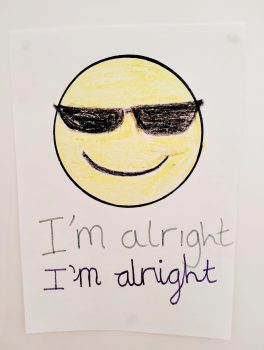
I’m alright (Estoy bien)
This is a generic response that means the same as “I’m fine”, but it’s far more colloquial and much cooler. In fact, I don’t think that I’ve ever used “I’m fine” in a conversation with friends, family or even strangers in my day-to-day life. It’s so common to say “alright” in everyday British life that we use it as a question too.
“Alright, mate?”
“Yeah, I’m alright. You?”
I’m OK (Estoy bien)
Técnicamente hablando “I’m OK” significa lo mismo que “I’m fine”, pero realmente el primero tiene un toque menos positivo. A menudo la gente lo usa si está en una situación difícil pero no quiere preocupar a la otra persona. Es decir, lo puede menejar.
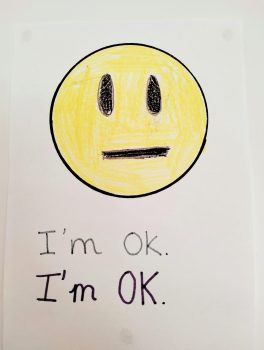
I’m OK (Estoy bien)
Strictly speaking “I’m OK” is the same as “I’m fine,” but it’s got a hint of being less positive. People often use it if they’re in a difficult situation and want to reassure the other person that they can handle it.
I’m not very well (No me encuentro bien)
Al empezar todas las clases preguntamos a nuestros alumnos cómo están y si, por ejemplo, no se sienten bien, es importante que seamos conscientes. Podemos modificar las tareas que les asignamos y suavizar la dificultad un poco, rebajando las expectativas. ¿Te puedes imaginar estar en una situación en la que no te encuentre bien y, además, no se lo puedas decir a nadie?
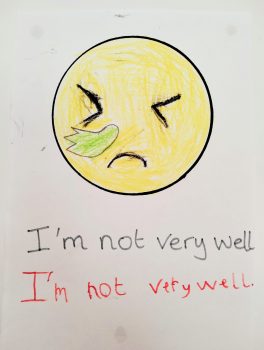
I’m not very well (No me encuentro bien)
At the start of every class we ask our students how they are and if, for example, they aren’t feeling very well, it’s really important for us to know. We can adjust the tasks we give them and relax our expectations of them just a bit. Can you imagine being in a situation where you didn’t feel well, but you couldn’t tell anybody about it?
I’m great! (Estoy estupendamente)
A todos nos gusta escuchar esa repsuesta y cuando les preguntamos a nuestros alumnos por qué se encuentran así, les encanta contarnos las buenas noticias y los planes interesantes que tienen. Y, aunque es agradable ayudarles a descubrir la gratitud por las cosas pequeñas del día a día, si realmente no tienen un motivo da lo mismo. Estaremos felices de su simple disposición positiva.
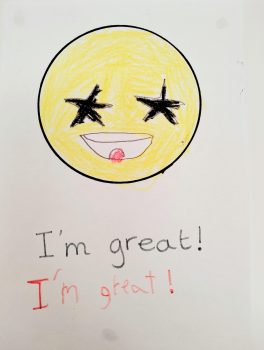
I’m great! (Estoy fantástico)
We love hearing this and when we ask why, our students love telling us about their good news and exciting plans. And, although it’s nice to help them discover the gratitude they have for the small things in their day, if they don’t have a reason, that’s ok too. We’re happy that they have a positive outlook today.
I’m not great (No estoy bien)
¿Cuánta fuerza se necesita para admitir que no se está bien? Creemos que mostrar vulnerabilidad y pedir ayuda cuando se necesita es algo bueno. Por lo tanto, es imprescindible que les demos a nuestros niños el lenguaje y las herramientas necesarias para expresarlo, si alguna vez se les presenta la ocasión.
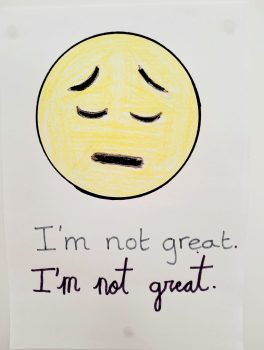
I’m not great (No estoy bien)
How strong a person do you have to be to admit that you aren’t ok? We think that showing your vulnerability and asking for help when you need it is a good thing. So, it’s essential that we give our children the language and tools they’ll need to express it if they ever need to.
I’m tired (Estoy cansado/Tengo sueño)
En inglés “I’m tired” puede significar o que estoy cansado o que tengo sueño. Es una frase muy importante para el vocabulario de un niño porque puede indicar que hay algo que no va del todo bien en su día a día. Algo que usualmente es bastante fácil de arreglar si se comunica.
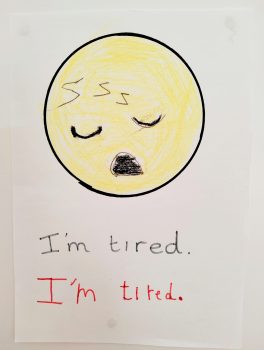
I’m tired (Estoy cansado/Tengo sueño)
In English “I’m tired” can mean either that I’m fatigued or that I want to go to sleep. This is a really important phrase to have in a child’s vocabulary because it can indicate that there is something not quite right in their daily life. Something that’s usually quite easy to fix.
I’m worried (Estoy preocupado)
A todos nos cuesta concentrarnos cuando tenemos problemas rondándonos constantemente la cabeza. Con frecuencia tendemos a sobredimensionar las preocupaciones cuando pensamos mucho en ellas, ¡lo cual nos hace preocuparnos aún más! No siempre queremos que nos ofrezcan una solución, pero alivia mucho poder quitarse ese peso de encima hablándolo para aclarar la mente.
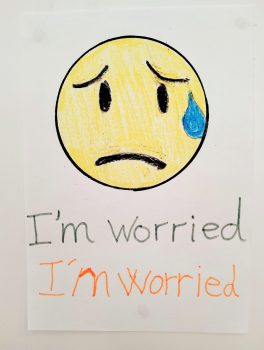
I’m worried (Estoy preocupado)
We’ve all struggled to concentrate when we have something weighing heavily on our minds. Oftentimes our worries grow out of proportion in our heads, which makes us worry even more! We don’t always want a solution, but it’s such a relief to take that weight off of your shoulders by unloading your worries and clearing your head.
I’m cross (Estoy enfadado)
A todos nos ocurren cosas que nos pueden hacer enfadar y es normal que a veces necesitemos desahogarnos. Nuestros niños no son diferentes y por supuesto no es el estado de ánimo ideal para prestar atención y aprender en clase si tienen estos sentimientos. Por eso, ser capaz de ser consciente de sus emociones, procesarlas y poder hablar de ellas, es una habilidad que les ayudará a lo largo de todas sus vidas.
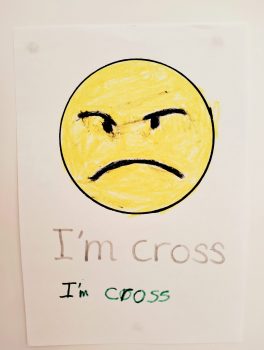
I’m cross (Estoy enfadado)
In all of our lives things happen that annoy us and we sometimes need to vent. Well, our kids are no different, and they are definitely not in the right mentality to learn if they have these things bubbling away inside of them. Being able to notice, process and talk about difficult emotions is a skill that will help them throughout their whole lives.
I’m really upset (Estoy molesto)
Todos nos alteramos de vez en cuando y algunas cosas que nos puedan parecer triviales pueden ser muy importantes para nuestros niños. Poner palabras a nuestras emociones es muy tranquilizante porque ayuda a nuestros cerebros a dar un sentido a lo que sentimos. ¡Por eso tendemos a disfrutar las canciones cuya letra refleja cómo nos estamos sintiendo en ese momento! Así que, escucha a tu hijo, empatiza con él e incluso ayúdale a buscar las palabras que necesita para describir cómo se siente. Te sorprenderá lo rápido que superará su problema.
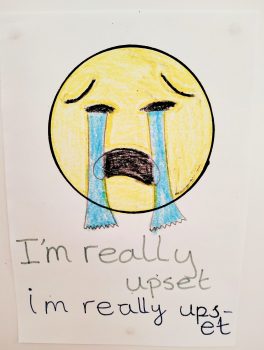
I’m really upset (Estoy molesto)
We all get upset from time to time and things that might sound trivial to us can be really important to our children. Putting our emotions into words is so calming as it helps our brains make sense of what we’re feeling. That’s why we tend to enjoy songs whose lyrics reflect how we’re feeling at that time! So, listen to your child. Really empathise with them and help them find the words they need to describe how they feel. You’ll be surprised by how quickly they’ll get over it.
I’m feeling overwhelmed (Me siento agobiado)
Los niños realizan muchas actividades hoy en día y, encima, tienen muchos deberes del colegio, por no hablar de los exámenes que tengan que estudiar a lo largo del curso. Súmale a eso las presiones de hacer y mantener amistades en un mundo donde se les juzga de forma constante en las redes sociales y es fácil ver cómo la vida puede parecerles arrolladora. Ser capaz de hablar sobre el estrés que se sufre es el primer paso para reducirlo y, a su vez, manejarlo.
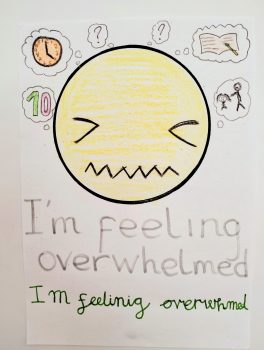
I’m feeling overwhelmed (Me siento agobiado)
Kids do so many activities these days, and on top of that they get a lot of homework, not to mention all the exams they have to study for throughout the year. Put that together with the pressures of making and maintaining friendships, in a world where they seem to be constantly judged on social media, and it’s easy to see how life can sometimes seem too much. Being able to talk about the stress they are under is the first step to reducing it and, in turn, managing it.
Mantener la conversación
La forma más fácil de conseguir que un niño te hable es estar interesado en él. ¿A quién no le gusta hablar de sí mismo?
Pero los niños son listos, y se dan cuenta de cuando estamos fingiendo. Por lo que cuando tengas estas interacciones con ellos, préstales toda tu atención. Siéntate con él, guarda el móvil y no intentes hacer varias cosas a la vez que le escuchas.
Una vez que te haya dado una respuesta, simplemente pregúntale “Why?” Es normal que vacile al principio, así que puedes ayudarles a empezar. Di “Because…” y espera. Puede que tengas que suminístrales un poco de vocabulario adicional, pero te sorprenderá cómo se las ingenia. ¡Es muy agradable!
Maintain the conversation
The easiest way to get a child to talk to you is to be interested in them. Who doesn’t like talking about themselves?
But kids are clever, and they can tell if you are faking it. So when you do have these interactions, give them your full attention. Sit down with them, put your phone away and don’t try to secretly multitask.
Once they’ve given you an answer simply ask “Why?” They usually hesitate at first, so start them off. Say “Because…” and wait. You may have to give them some extra vocabulary, but you’ll be surprised by what they come up with. It really is lovely!

Darles responsabilidad sobre la tarea
Los niños (y los adultos también) tienden estar más comprometido con algo en lo que ya han participado. Un buen modo de lograr eso es hacer un poster con tu hijo. Escoge algunas respuestas comunes a “How are you?” y comienza a dibujar los emojis con tu hijo. Le encantará tenerte para sí solo y generará unos sentimientos muy positivos que tu hijo asociará con la actividad.
Una vez que hayáis completado tres o cuatro caras, deja tu hijo desplazarse por los emojis en tu Whatsapp. Déjale elegir un par que le gustan o que le resultan graciosos. Háblale de las emociones que simbolizan (en vuestra lengua materna) y entonces buscad las traducciones juntos. Añadidlos a vuestro poster y os garantizo que vuestro hijo se estará muriendo de ganas de usar sus frases nuevas.
Give them ownership of the task
Children (and adults too) tend to be more committed to something that they have invested in. A great way to do this is to make a poster with your child. Pick a few common responses to “How are you?” and start drawing the emojis with your child. They’ll love having you all to themselves and it’ll create some really positive feelings that they’ll associate with the activity.
Once you’ve completed three or four faces, let your child scroll through the emojis on your Whatsapp. Let them choose a couple that they like or find funny. Talk about what emotions they represent (in your mother tongue) and then together search for their translations. Add them to your poster and I guarantee your child will be dying to find an opportunity to use their new phrases.
Hazlo un hábito
1. Elige una hora y lugar que sea conveniente para vosotros dos y dónde el poster está a plena vista. (Cuando llegan después del colegio o cuando tú llegas del trabajo son buenas opciones.)
2. Contestar es obligatorio, ya sea en tres palabras o 300.
3. Muestra agradecimiento de que te haya contestado en inglés. Una simple sonrisa y asentir es suficiente.
4. Pregúntale “Why?” y empieza su respuesta con “Because…” para ayudarle si hace falta.
5. Y después espera, puedes señalarte a ti mismo si es necesario para que te pregunte ¡cómo estás tú!
Make it a habit
1. Choose a time and a place that’s convenient for you both and where the poster is in full view. (When they get in after school or you get home from work are good options.)
2. Answering is mandatory, be it three words or 300.
3. Show your gratitude that they have answered you in English. A simple smile and nodding of the head is enough.
4. Ask them “Why?” and start their sentence for them with “Because…” if needed.
5. Then you wait, pointing to yourself if necessary, for them to ask you how you are!
